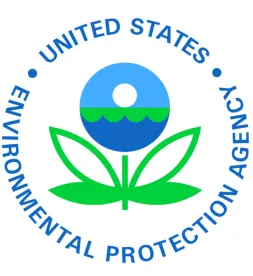On Dec. 10, the U.S. Environmental Protection Agency (EPA) released its final rule amending the RCRA Subtitle C “Definition of Solid Waste.” The final rule will go into effect 180 days from the date of publication in the Federal Register, expected in mid-January 2015.
This rule has been under development since 2010, when EPA settled a lawsuit filed by the Sierra Club by agreeing to propose revisions to the 2008 Definition of Solid Waste Rule to address the changes requested by the Sierra Club in an administrative petition filed in January 2009.
Legitimacy Criteria Applicable to All Recycling
Under the final rule, EPA may bring a RCRA enforcement action against any recycler of hazardous secondary materials if the recycling activity does not meet all of the following four recycling legitimacy criteria:
-
a hazardous secondary material must make a useful contribution to a final product or intermediate,
-
the recycling process must produce a valuable product or intermediate,
-
the hazardous secondary material must be managed as a valuable commodity, and
-
the final product must be comparable to a legitimate product or intermediate with respect to hazardous characteristics and levels of hazardous constituents.
If operating pursuant to the exclusion for recycling under the control of the generator or the verified recycler exemption, notification to EPA and maintenance of documentation onsite describing how the recycling activity meets the legitimacy criteria are conditions of the exclusion.
For recyclers operating under other (pre-2008) exclusions or exemptions, notification and documentation of legitimacy are not conditions of the recycling exemption unless the recycler is relying on a self-determination that the recycling activity is legitimate even though the product produced has levels of hazardous constituents that are not comparable to those found in analogous products. Instead, EPA added new Section 261.2(g) that allows EPA to find that recycling is sham and hazardous secondary material is a solid waste, based on a finding that the legitimacy criteria are not met.
Hazardous Constituents Comparison
In the final rule, EPA made the legitimacy criterion relating to comparable hazardous constituents more flexible than proposed. If there is an analogous product, a recycler can compare constituent levels to those found in the analogous product or to “widely-recognized commodity standards and specifications” if the standard and specification specifically addresses the hazardous constituents found in the product of recycling. If there is no analogous product, then the product of recycling is comparable if it meets “widely-recognized commodity standards and specifications,” whether or not the standard or specification addresses all the constituents found in the product of recycling. In addition, EPA assumes there is no analogous product in the case of closed-loop recycling and in the final rule all closed-loop recycling is considered comparable. In the preamble, EPA declares all closed–loop recycling to be legitimate recycling.
In the proposed rule, EPA would have required recyclers to petition EPA for a determination that a product of recycling is legitimate even if it has higher levels of hazardous constituents. In the final rule EPA replaced the petition process with a self-determination that the product meets the fourth legitimacy criterion based on lack of human health or environmental risk, if the determination is documented, certified, and maintained as a record, and notice to EPA is provided.
Exclusions
The final rule maintains the exclusion for recycling under the control of the generator, including tolling operations, with notice, record-keeping, containment, speculative accumulation, and emergency response and preparedness conditions.
The final rule replaces the 2008 transfer-based exclusion with a verified recycler exclusion that allows a generator to send hazardous secondary material to a recycler if the recycler has a Subtitle C permit or has received a variance from EPA and the generator keeps the material contained, meets record-keeping requirements, meets emergency preparedness and response requirements, and provides notice to EPA.
The conditions applicable to recycler under the verified recycler exclusion are similar to those applicable to third-party recyclers in the 2008 rule (financial assurance, etc.) with the addition of emergency preparedness and response requirements and a requirement to address the potential for risk to populations residing near the recycling operation.
A new exclusion is finalized for remanufacturing certain high value solvents. This exclusion is limited to 18 specified solvents, originating from and remanufactured by four specified industry sectors for use for reacting, extracting, purifying, or blending chemicals (or for rinsing out the process lines in NAICS 325510) or for use as ingredients in a product. EPA places many conditions on this exclusion by restating the tank and container standards found in 40 CFR Part 264 Subparts I and J, and requiring air emission controls in compliance with CAA regulations under 40 CFR Part 60, part 61 or part 63, or compliance with technical standards copied from 40 CFR Part 264 and 265 Subparts AA, BB, and CC.
The emergency response and preparedness conditions on the generator-controlled and verified recycler exclusions are based on requirements in 40 CFR Part 265 applicable to large and small quantity generators of hazardous waste.
Other Changes
The final rule will affect all persons who accumulate hazardous waste before recycling by adding a labeling requirement to the definition of speculative accumulation under 40 CFR 261.1(c)(8).
The final rule will affect all persons operating under variances or non-waste determinations by amending 40 CFR 260.31 to change the criteria for the partially-reclaimed material variance and by amending 40 CFR 260.33 to add notification requirements and to limit the duration of variances and non-waste determinations to ten years.








 />i
/>i

